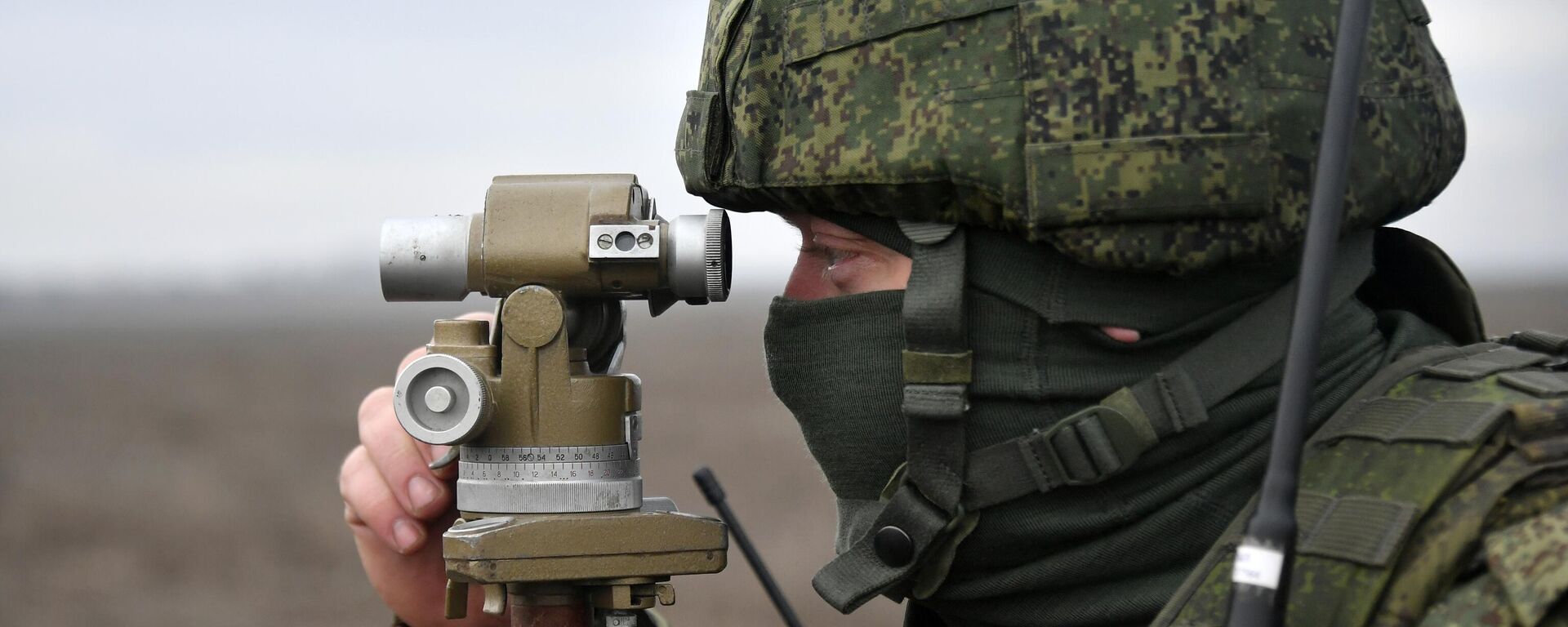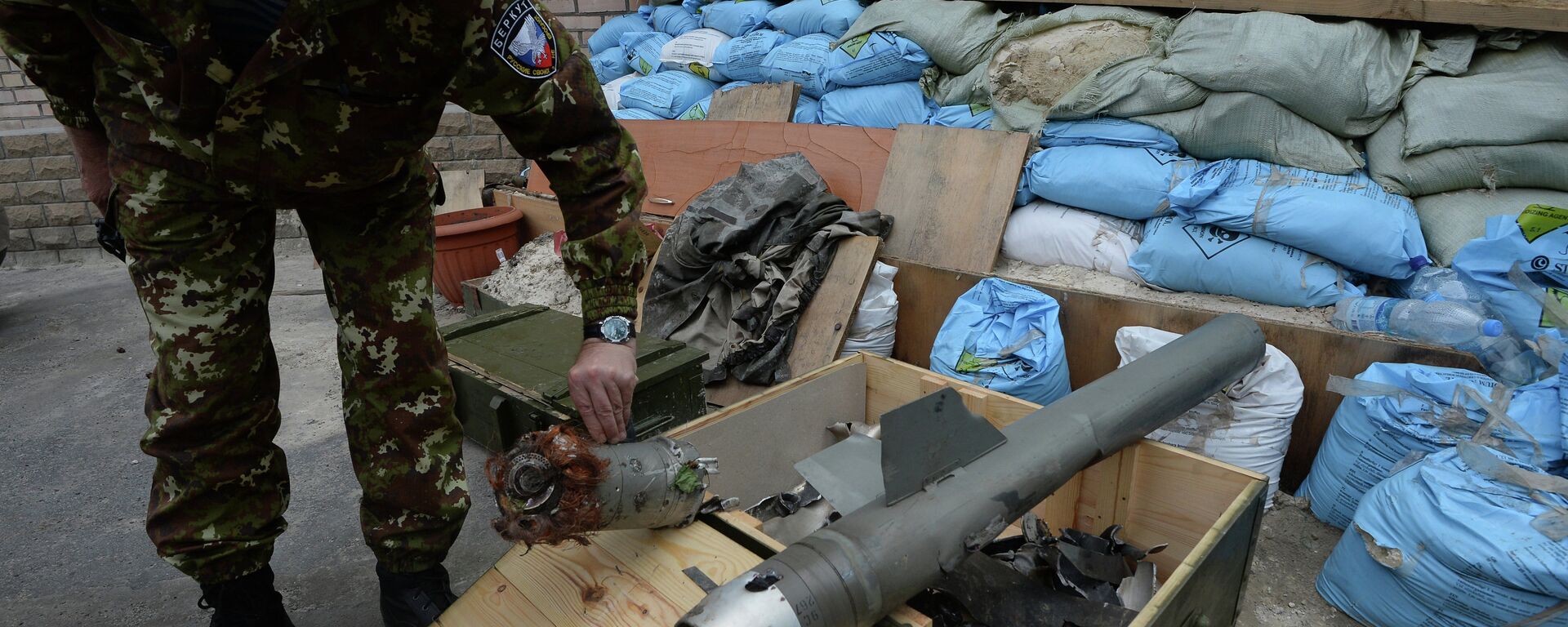https://sputnikglobe.com/20230707/kievs-terror-shelling-of-donbass-signals-growing-desperation-ahead-of-nato-summit-1111722800.html
Kiev’s Terror Shelling of Donbass Signals Growing Desperation Ahead of NATO Summit
Kiev’s Terror Shelling of Donbass Signals Growing Desperation Ahead of NATO Summit
Sputnik International
Ukraine’s military has made the practice of terror shelling, i.e. the deliberate shelling of civilian settlements and infrastructure, a regular component of its strategy. How effective is it? And could it help Kiev reach its military-strategic goals?
2023-07-07T13:24+0000
2023-07-07T13:24+0000
2023-07-08T19:01+0000
russia's special operation in ukraine
ukraine
donbass
denis pushilin
joint center for control and coordination (jccc)
donetsk people’s republic
dpr
high mobility artillery rocket system (himars)
multiple-launch rocket systems (mlrs)
nato summit in vilnius
https://cdn1.img.sputnikglobe.com/img/07e7/07/07/1111722222_0:160:3072:1888_1920x0_80_0_0_2f4da0ffab5dc0e1dff9eef0b7306697.jpg
The intensification of Ukrainian shelling attacks against the Donetsk People’s Republic signals Kiev’s attempts to appease its Western patrons ahead of next week’s NATO summit, DPR acting head Denis Pushilin has said.Commenting on Wednesday’s shelling of an administrative building in the city of Volnovakha, Pushilin said the attack appeared to have been carried out using HIMARS rockets, with “one rocket striking the building and the second the parking lot. They were hit on purpose.”Wednesday’s attack damaged three floors of Volnovakha’s administration, injuring three employees. Separately on Wednesday, the Joint Center for Control and Coordination (JCCC), a military watchdog that monitors and documents shelling, reported that 68 people, including three children, had been injured and a 61 year-old man killed in Ukrainian shelling of a hospital in the city of Makeevka this week.Authorities in the neighboring Lugansk People’s Republic have also reported an escalation of Ukrainian shelling during the week, citing attacks on frontline settlements including Kremennaya, Rubezhnoye, Lisichansk, Severodonetsk, and Svatovo using mostly Polish, German, and French-made 155 mm howitzers and self-propelled artillery.Shelling continued into Friday, with the JCCC reporting that an attack in the Kuibyshevsky district of the city of Donetsk had damaged a city hospital, as dozens more 155 mm NATO caliber shells rained down seemingly randomly on targets throughout the city. Separately, authorities reported that the shelling of the settlement of Aleksandrovka, near the front line with Ukrainian forces, completely destroyed the village’s post office building.Long TraditionThe deliberate shelling of civilian areas in Donbass is nothing new for Ukraine’s military. This past May, the JCCC reported that between February 2022 and May 10, 2023, Ukrainian forces shelled the frontline city of Gorlovka alone over 10,100 times, killing 107 civilians and injuring 369 more. Overall, the JCCC calculated that some 4,527 civilians had been killed in the DPR, 3,791 of them in newly liberated territories and 736 within the DPR’s borders prior to the escalation, over the past year. Some 4,431 civilians were wounded, 114 of them by PFM-1 Lepestok scatterable anti-personnel landmines regularly deployed by Ukrainian forces.The shelling of Donbass cities and settlements began all the way back in 2014, after it became clear to the authorities in Kiev who came to power in the February 2014 Western-backed coup that they would not be able to re-establish control over Donbass by force.The delivery of tens of billions of dollars’ worth of advanced NATO armaments, including heavy artillery and howitzers, HIMARS, and longer-range missiles, have enabled Kiev to dramatically ramp up its shelling attacks, both to terrorize the local population and to target any Russian forces who may happen to be passing through the targeted areas.Questionable ImpactThe overall long-term strategic impact of Ukraine’s terror bombing is questionable, with US experience in conflicts including Vietnam and Iraq demonstrating that such attacks usually only serve to increase the determination of civilians to resist.Kiev’s shelling attacks, and Ukrainian officials’ regular, blunt promises to continue “killing Russians” and refusal to characterize attacks in Donbass as “terrorism” or “genocide,” have served to solidify locals’ resolve, with over 95 percent of residents of the DPR and LPR voting in referendums to join Russia last fall.Diversionary TacticThe bogging down of Ukraine’s much-hyped counteroffensive may also help explain the ramping up of shelling attacks.On Thursday, the Russian MoD reported that Russian forces had repelled nine Ukrainian attacks in the Donetsk region, with as many as 385 Ukrainian servicemen killed, and one tank, three armored combat vehicles, eight specialized vehicles, two D-20 howitzers, and two Krab self-propelled artillery systems destroyed. As many as 165 Ukrainian troops, a Stryker armored personnel carrier, Grad MLRS, Caesar, and Gvozdika self-propelled guns were also reported destroyed in the South Donetsk and Zaporozhye directions over the same 24-hour period.The stumbling of the counteroffensive, which has been in progress for over a month after kicking off on June 4, may give Kiev the impetus to prove to its NATO sponsors that the conflict is accelerating, and that more weapons, or better yet some direct military commitments, are needed.According to media reports, despite the summit being just days away, allies haven't decided what to offer Kiev at the meeting, with Washington reportedly favoring “security guarantees,” instead of membership, over the near term, given the threat of dramatically escalating the current proxy conflict with Russia.Recognition that the present stage of the conflict is crucial for Kiev is widespread, with a new report by the Kiel Institute for the World Economy released this week showing that pledges of military and economic support for Ukraine have dropped steadily in 2023, with military equipment coming to constitute over 70 percent of all aid between April and May.A growing number of outside observers expect the Vilnius summit to be a “flop” as far as Ukraine’s ambitions go, with the alliance’s European members in particular characterized as being “out of money and bullets,” and in no “mood to give a blank check to Ukraine or risk a bigger war that might spread into Europe.”In the meantime, so long as supplies of NATO standard 155 mm shells, HIMARS, longer-range missiles, and now cluster munitions continue to flow to Kiev, residents of Donbass, Kherson, Zaporozhye, Crimea, and other Russian border regions will remain under threat.
https://sputnikglobe.com/20230706/ukraine-may-use-cluster-ammo-against-civilians-as-part-of-terror-tactics-1111703767.html
https://sputnikglobe.com/20230606/us--its-himars-provided-to-criminal-kiev-regime-responsible-for-kakhovka-hpp-attack-1110947364.html
https://sputnikglobe.com/20200512/us-veterans-stationed-in-guam-during-vietnam-war-likely-exposed-to-agent-orange---white-paper-1079286261.html
https://sputnikglobe.com/20230705/ukraine-loses-over-300-soldiers-in-south-donetsk-zaporozhye-directions-1111674913.html
https://sputnikglobe.com/20230707/biden-reportedly-approves-sending-cluster-munitions-to-ukraine-1111718488.html
ukraine
donbass
Sputnik International
feedback@sputniknews.com
+74956456601
MIA „Rosiya Segodnya“
2023
News
en_EN
Sputnik International
feedback@sputniknews.com
+74956456601
MIA „Rosiya Segodnya“
Sputnik International
feedback@sputniknews.com
+74956456601
MIA „Rosiya Segodnya“
shelling, donbass, ukraine, terror shelling, shells, artillery, attacks, civilian, settlements, cities, nato summit
shelling, donbass, ukraine, terror shelling, shells, artillery, attacks, civilian, settlements, cities, nato summit
Kiev’s Terror Shelling of Donbass Signals Growing Desperation Ahead of NATO Summit
13:24 GMT 07.07.2023 (Updated: 19:01 GMT 08.07.2023) Ukraine’s military has made the practice of terror shelling, i.e. the deliberate shelling of civilian settlements and infrastructure, a regular component of its strategy. How effective is it? And could it help Kiev reach its military-strategic goals?
The intensification of Ukrainian shelling attacks against the Donetsk People’s Republic signals Kiev’s attempts to appease its Western patrons ahead of next week’s NATO summit, DPR acting head Denis Pushilin has said.
“We can see that the enemy, ahead of the summit, has intensified the shelling of residential buildings and areas,” Pushilin said in an interview with Russian media on Thursday.
Commenting on Wednesday’s shelling of an administrative building in the city of Volnovakha, Pushilin said the attack appeared to have been carried out using HIMARS rockets, with “one rocket striking the building and the second the parking lot. They were hit on purpose.”
Wednesday’s attack damaged three floors of Volnovakha’s administration, injuring three employees. Separately on Wednesday, the Joint Center for Control and Coordination (JCCC), a military watchdog that monitors and documents shelling, reported that 68 people, including three children, had been injured and a 61 year-old man killed in Ukrainian shelling of a hospital in the city of Makeevka this week.
Authorities in the neighboring Lugansk People’s Republic have also reported an escalation of Ukrainian shelling during the week, citing attacks on frontline settlements including Kremennaya, Rubezhnoye, Lisichansk, Severodonetsk, and Svatovo using mostly Polish, German, and French-made 155 mm howitzers and self-propelled artillery.
Shelling continued into Friday, with the JCCC reporting that an attack in the Kuibyshevsky district of the city of Donetsk had damaged a city hospital, as dozens more 155 mm NATO caliber shells rained down seemingly randomly on targets throughout the city. Separately, authorities reported that the shelling of the settlement of Aleksandrovka, near the front line with Ukrainian forces, completely destroyed the village’s post office building.
The deliberate shelling of civilian areas in Donbass is nothing new for Ukraine’s military. This past May, the JCCC reported that between February 2022 and May 10, 2023, Ukrainian forces shelled the frontline city of Gorlovka alone over 10,100 times, killing 107 civilians and injuring 369 more. Overall, the JCCC calculated that some 4,527 civilians had been killed in the DPR, 3,791 of them in newly liberated territories and 736 within the DPR’s borders prior to the escalation, over the past year. Some 4,431 civilians were wounded, 114 of them by PFM-1 Lepestok scatterable anti-personnel landmines regularly deployed by Ukrainian forces.
The shelling of Donbass cities and settlements began all the way back in 2014, after it became clear to the authorities in Kiev who came to power in the February 2014 Western-backed coup that they would not be able to re-establish control over Donbass by force.
The delivery of tens of billions of dollars’ worth of advanced NATO armaments, including heavy artillery and howitzers, HIMARS, and longer-range missiles, have enabled Kiev to dramatically ramp up its shelling attacks, both to terrorize the local population and to target any Russian forces who may happen to be passing through the targeted areas.
The overall long-term strategic impact of Ukraine’s terror bombing is questionable, with US experience in conflicts including Vietnam and Iraq demonstrating that such attacks usually only serve to increase the determination of civilians to resist.
Kiev’s shelling attacks, and Ukrainian officials’ regular, blunt promises to continue “killing Russians” and refusal to characterize attacks in Donbass as “terrorism” or “genocide,” have served to solidify locals’ resolve, with over 95 percent of residents of the DPR and LPR voting in referendums to join Russia last fall.
The bogging down of Ukraine’s much-hyped counteroffensive may also help explain the ramping up of shelling attacks.
On Thursday, the Russian MoD reported that Russian forces had repelled nine Ukrainian attacks in the Donetsk region, with as many as 385 Ukrainian servicemen killed, and one tank, three armored combat vehicles, eight specialized vehicles, two D-20 howitzers, and two Krab self-propelled artillery systems destroyed. As many as 165 Ukrainian troops, a Stryker armored personnel carrier, Grad MLRS, Caesar, and Gvozdika self-propelled guns were also reported destroyed in the South Donetsk and Zaporozhye directions over the same 24-hour period.
The stumbling of the counteroffensive, which has been in progress for over a month after kicking off on June 4, may give Kiev the impetus to prove to its NATO sponsors that the conflict is accelerating, and that more weapons, or better yet some direct military commitments, are needed.
According to media reports, despite the summit being just days away, allies
haven't decided what to offer Kiev at the meeting, with Washington reportedly favoring “security guarantees,” instead of membership, over the near term, given the threat of dramatically escalating the current proxy conflict with Russia.
Recognition that the present stage of the conflict is crucial for Kiev is widespread, with a
new report by the Kiel Institute for the World Economy released this week showing that pledges of military and economic support for Ukraine have dropped steadily in 2023, with military equipment coming to constitute over 70 percent of all aid between April and May.
A growing number of outside observers expect the Vilnius summit to be a “flop” as far as Ukraine’s ambitions go, with the alliance’s European members in particular characterized as being
“out of money and bullets,” and in no “mood to give a blank check to Ukraine or risk a bigger war that might spread into Europe.”
In the meantime, so long as supplies of NATO standard 155 mm shells, HIMARS, longer-range missiles, and now cluster munitions continue to flow to Kiev, residents of Donbass, Kherson, Zaporozhye, Crimea, and other Russian border regions will remain under threat.









